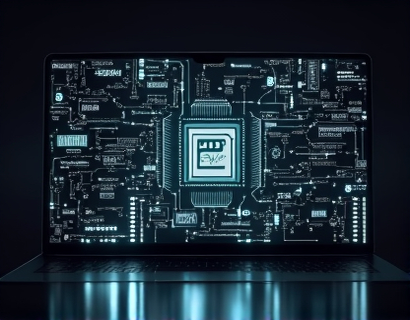Unlocking DeFi Mastery: The Ultimate Web3 Wallet for Seamless Crypto and Token Management
In the rapidly evolving landscape of decentralized finance, or DeFi, the need for a robust and user-friendly Web3 wallet has become paramount. This article delves into the intricacies of managing digital assets through an advanced Web3 wallet, designed to offer a secure, intuitive, and seamless experience for crypto enthusiasts and DeFi users alike. The focus is on how such a wallet can streamline access, storage, and transactions, making the complex world of decentralized finance more accessible and manageable.
Understanding Web3 Wallets
A Web3 wallet, also known as a decentralized wallet, is a digital wallet that stores private keys and allows users to interact directly with blockchain networks without the need for intermediaries. Unlike traditional wallets, Web3 wallets provide full control over funds and personal data, ensuring greater security and privacy. These wallets are integral to the DeFi ecosystem, enabling users to participate in decentralized applications, lend and borrow assets, and engage in various financial activities without relying on central authorities.
Key Features of an Advanced Web3 Wallet
An advanced Web3 wallet must incorporate several key features to ensure a seamless and secure experience. First and foremost, it should support multiple blockchain networks, including Ethereum, Binance Smart Chain, Polkadot, and others. This multi-chain compatibility allows users to manage a diverse portfolio of cryptocurrencies and tokens effortlessly. Additionally, the wallet should offer robust security measures such as hardware-level encryption, multi-factor authentication, and secure backup options to protect against potential threats.
User interface and experience are also critical components. The wallet should be intuitive and easy to navigate, with a clean and modern design that caters to both novice and experienced users. Clear instructions, tooltips, and a comprehensive help center can further enhance usability. Furthermore, the wallet should support a wide range of assets, including stablecoins, NFTs, and custom tokens, ensuring versatility and broad applicability.
Security: The Cornerstone of DeFi Wallets
Security is non-negotiable in the realm of DeFi and Web3 wallets. To safeguard user assets, the wallet must employ state-of-the-art cryptographic techniques and protocols. Private keys should be stored offline and encrypted, with users having full control over their recovery processes. The wallet should also implement regular security audits and updates to stay ahead of emerging threats. Additionally, features like transaction confirmation alerts and fraud detection mechanisms can provide an extra layer of protection.
Another crucial aspect of security is the wallet's approach to phishing and social engineering attacks. Educating users about common threats and providing tools to verify the authenticity of transactions and websites can significantly reduce the risk of security breaches. By prioritizing security, the wallet fosters trust and confidence among users, encouraging broader adoption and usage.
Streamlining DeFi Transactions
One of the primary advantages of a Web3 wallet is its ability to streamline DeFi transactions. By providing a centralized interface for interacting with various DeFi protocols, the wallet simplifies complex processes such as lending, borrowing, and yield farming. Users can access a wide range of financial services from a single platform, reducing the need to switch between multiple wallets and applications. This not only enhances convenience but also improves the overall user experience.
To further enhance transaction efficiency, the wallet can integrate smart contract templates and pre-built functions for common DeFi activities. This reduces the need for users to write and deploy custom smart contracts, lowering the barrier to entry for those new to DeFi. Additionally, real-time market data and analytics can help users make informed decisions, optimizing their financial strategies and maximizing returns.
Interoperability and Cross-Chain Support
In the decentralized finance space, interoperability is key. An advanced Web3 wallet should support cross-chain transactions, allowing users to seamlessly move assets between different blockchain networks. This feature is particularly valuable for users who engage in multi-chain DeFi projects or wish to diversify their asset allocation across various ecosystems. By facilitating cross-chain interactions, the wallet enhances flexibility and opens up new opportunities for users.
Interoperability also extends to integrating with other decentralized platforms and services. For instance, the wallet can connect with decentralized exchanges, decentralized finance protocols, and non-fungible token marketplaces, creating a comprehensive ecosystem for DeFi activities. This holistic approach ensures that users have access to a wide array of financial tools and services, all within a single, unified interface.
User Education and Support
Given the complexity of DeFi and Web3 technologies, user education and support are essential for widespread adoption. The wallet should come with comprehensive documentation, tutorials, and video guides that walk users through setup, configuration, and common tasks. A dedicated community forum or support channel can also provide a space for users to ask questions, share experiences, and collaborate on solutions.
Moreover, regular webinars, workshops, and live Q&A sessions can help demystify DeFi concepts and best practices. By investing in user education, the wallet fosters a knowledgeable and empowered user base, capable of navigating the DeFi landscape with confidence and precision.
Scalability and Performance
As the DeFi ecosystem continues to grow, the Web3 wallet must be designed with scalability and performance in mind. The wallet should handle a large number of transactions and assets without lag or downtime, ensuring a smooth user experience even during peak usage periods. Optimizing for speed and efficiency is crucial, as slow loading times and transaction delays can deter users and impact adoption.
To achieve this, the wallet can leverage advanced technologies such as layer 2 solutions, sharding, and state channels. These innovations can significantly reduce transaction costs and increase processing speeds, making the wallet more accessible and practical for everyday use. By focusing on performance, the wallet can maintain its relevance and utility in a rapidly evolving market.
Privacy and Anonymity
Privacy and anonymity are increasingly important concerns for many users in the DeFi space. An advanced Web3 wallet should offer features that protect user identities and transaction details. This can include options for using anonymous addresses, zero-knowledge proofs, and other privacy-enhancing technologies. By prioritizing user privacy, the wallet can appeal to those who value discretion and want to maintain control over their personal information.
Additionally, the wallet can provide tools for users to manage their online reputation and digital footprint, such as privacy-focused browsers and VPN integrations. These features not only enhance security but also empower users to engage in DeFi activities with greater peace of mind.
Future-Proofing and Innovation
To remain relevant in the fast-paced world of DeFi, the Web3 wallet must be forward-thinking and open to innovation. This involves staying abreast of emerging technologies and trends, such as decentralized identity solutions, quantum-resistant cryptography, and new blockchain protocols. By embracing these advancements, the wallet can stay ahead of the curve and continue to offer cutting-edge features and functionalities.
Collaboration with developers, researchers, and other stakeholders in the DeFi community can also drive innovation and improvement. Open-source development models can foster collaboration and transparency, allowing the community to contribute to the wallet's growth and evolution. This collaborative approach not only enhances the wallet's capabilities but also builds a strong and engaged user base.
Conclusion
In conclusion, an advanced Web3 wallet is a vital tool for anyone looking to master the world of decentralized finance. By offering a secure, intuitive, and feature-rich platform, such a wallet can significantly enhance the DeFi experience, making it more accessible and user-friendly. As the DeFi landscape continues to evolve, a well-designed Web3 wallet will play a crucial role in empowering users to navigate and thrive in this exciting new frontier of finance.










































